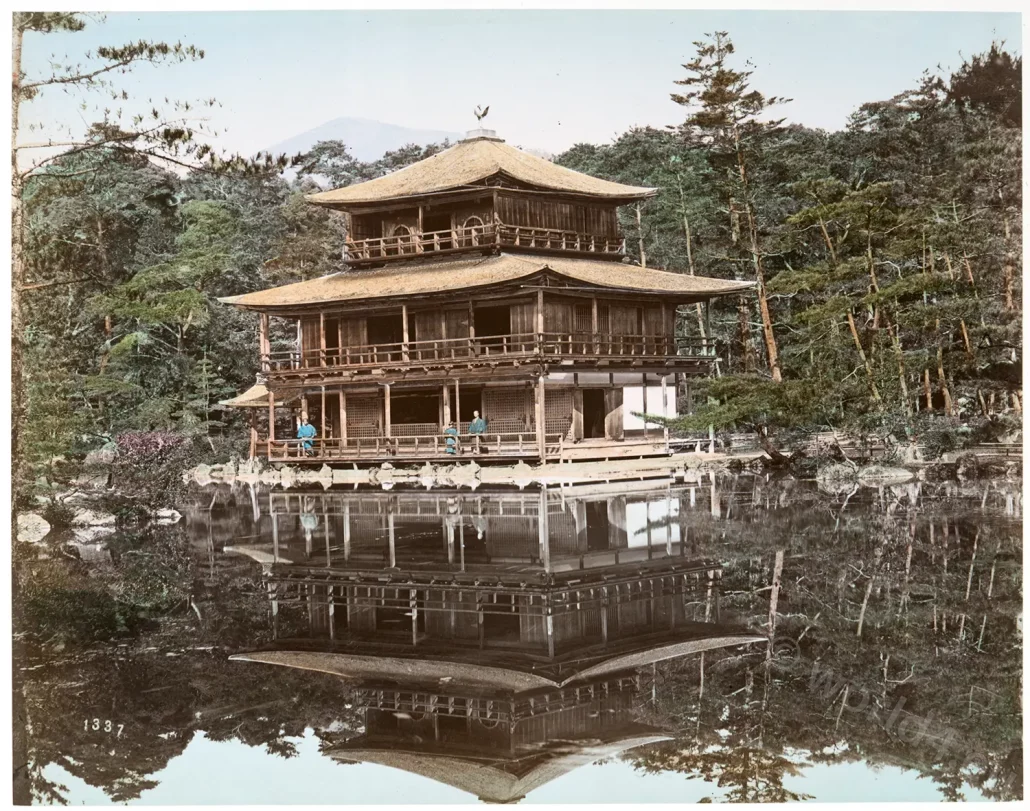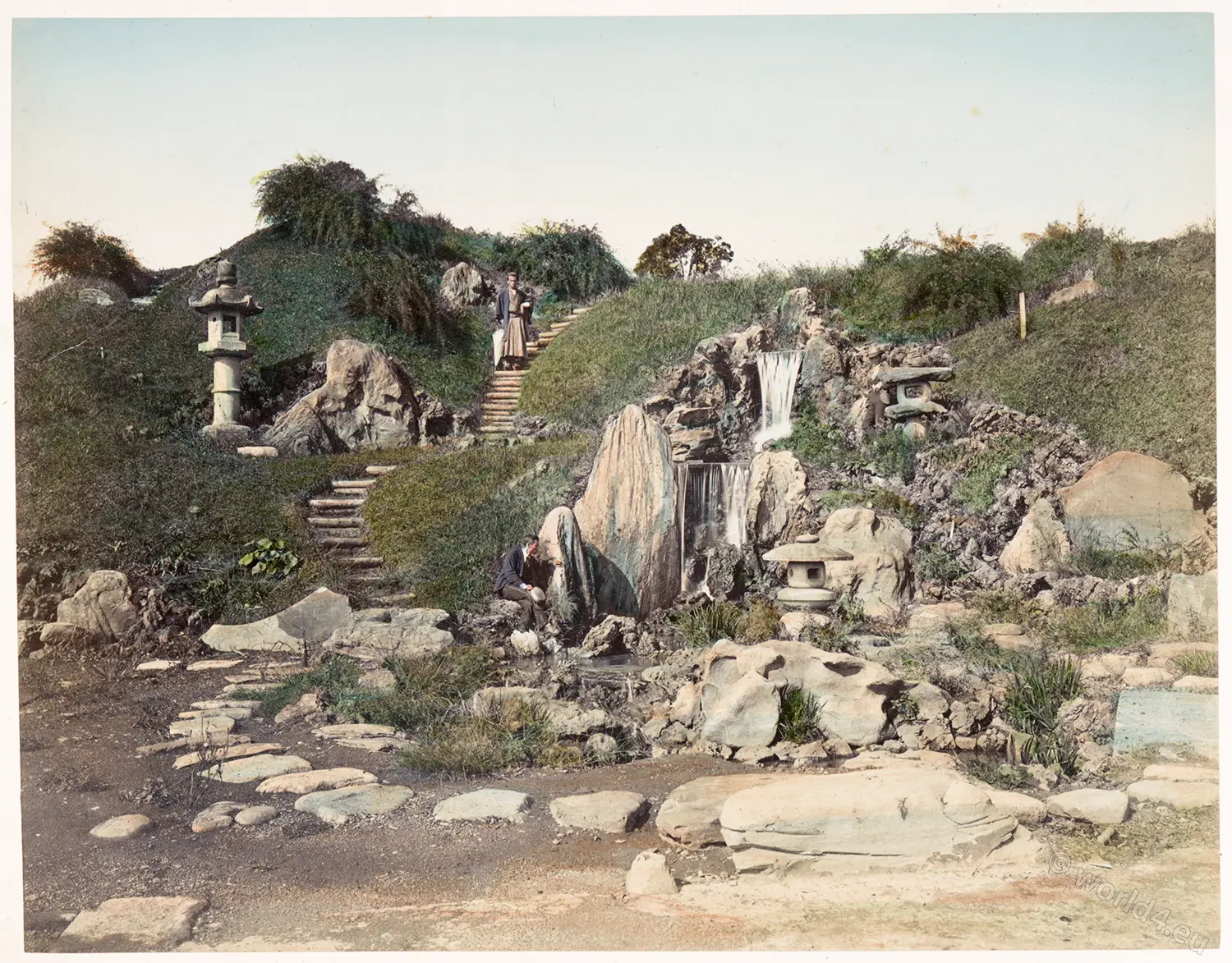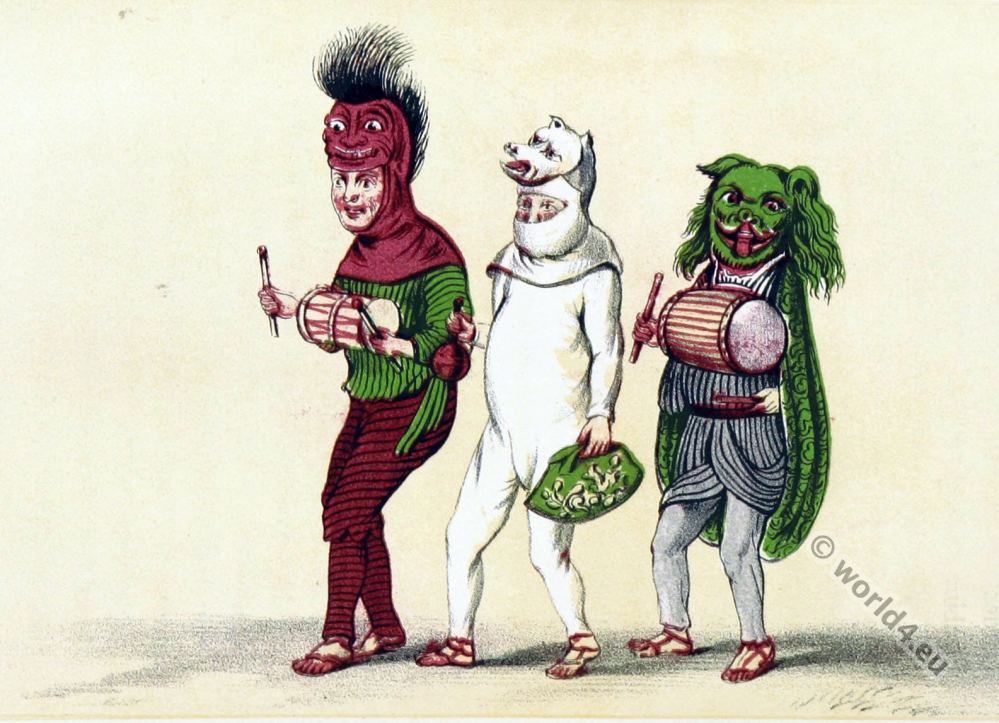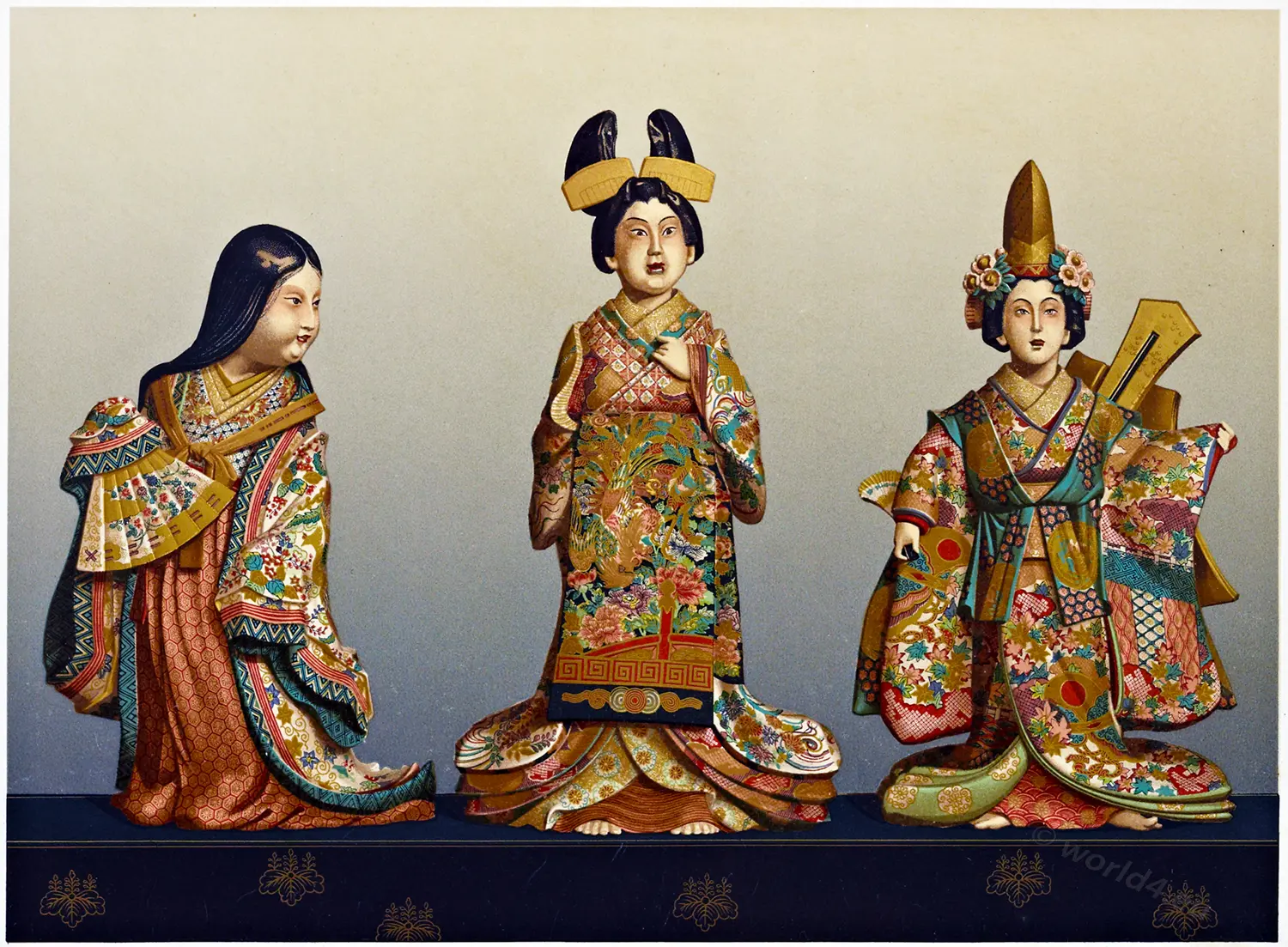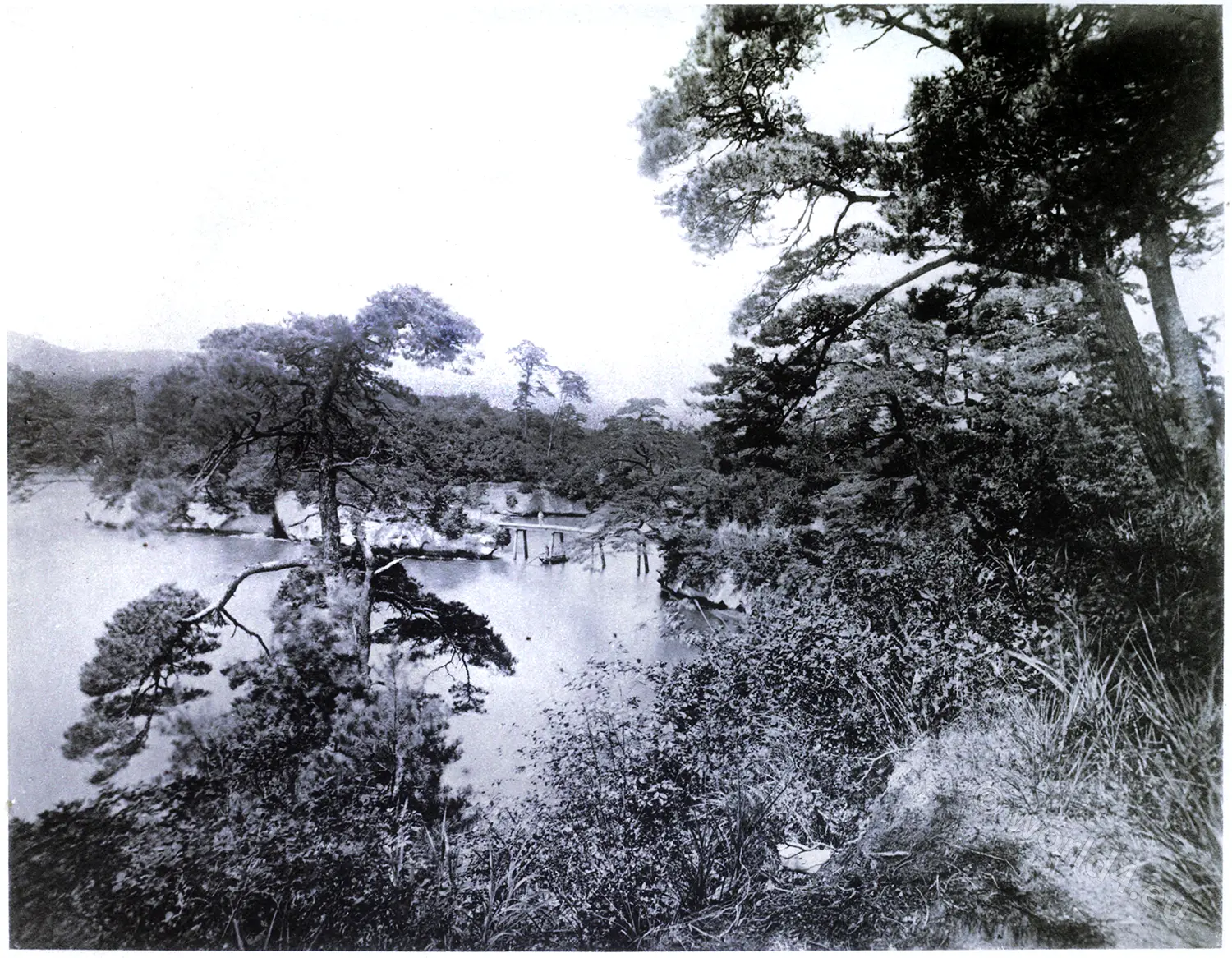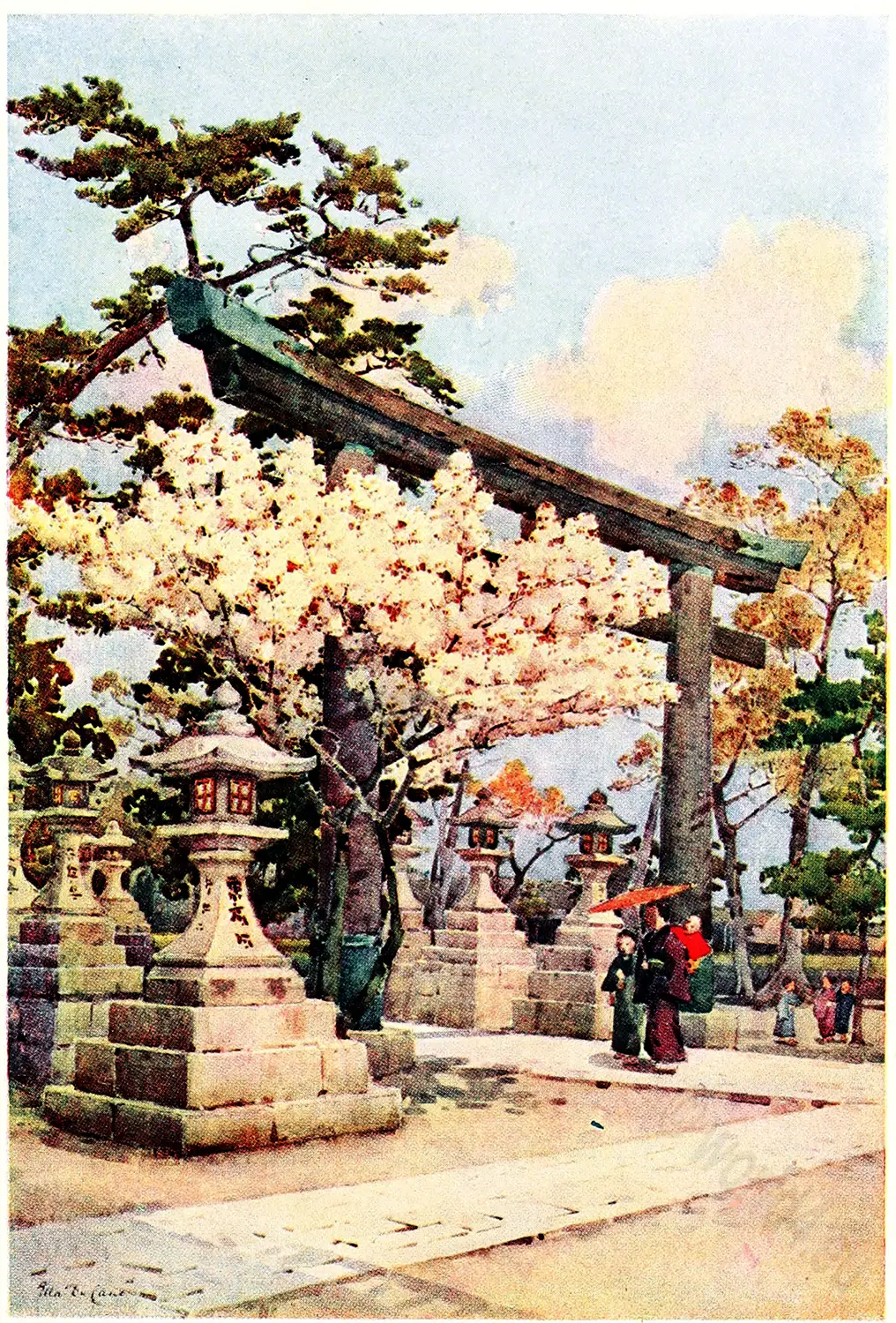PLATE VIII.
Kinkaku-ji (Temple of the Golden Pavilion) is the informal name for Rokuon-ji (Deer Garden Temple) in Kyoto, Japan. It was originally built in 1397 as a resting place for the shōgun Ashikaga Yoshimitsu, called Kitayama.
The temple complex is famous for the Shariden (“Hall of Relics”), whose upper floors are completely covered in gold leaf and is therefore known as Kinkaku (“Golden Pavilion”). Because of the pavilion’s fame, the name Kinkaku-ji is now used for the entire complex.
KINKAKUJI GARDEN, KYOTO
Josiah Conder.
The garden of the Kinkakuji, or Golden Pavilion, (actually Rokuon-ji) is one of the most historically interesting spots of the ancient capital, Kyoto. It was laid out in the fourteenth century for the Regent Ashikaga Yoshimitsu as a landscape to surround a palace built for his seclusion.
From this place of retirement, in priestly garb, and ostensibly indifferent to the cares of State, he secretly directed the government of his successor. A three-storied pavilion richly covered with gold formed the principal feature of the palace; this still remains, bearing traces of its former magnificence.
The lake which surrounds this garden pavilion, now thickly covered with the water-weeds of centuries, was called the “Mirror Ocean,” and contained three pine-clad islets shaped to resemble in their outline the principal islands of the Japanese Empire. Much artifice is said to have been bestowed upon the whole composition, in the grouping of rare trees and rocks, and in adapting the design to the surrounding prospects.
Perhaps the best proof of its original artistic perfection is to be found in the wildly natural aspect which it now bears, time having assisted art in that self-concealment which it is the latter’s highest purpose to attain. As now to be seen, the spot is no longer recognisable as an artificial garden, but resembles rather some romantic watered glen in which man has “built himself a lordly pleasure house.”
Source: Supplement to Landscape gardening in Japan Josiah Conder(1852-1920); Kengo Ogawa. Tokio: Kelly and Walsh, 1893.
Discover more from World4 Costume Culture History
Subscribe to get the latest posts sent to your email.

